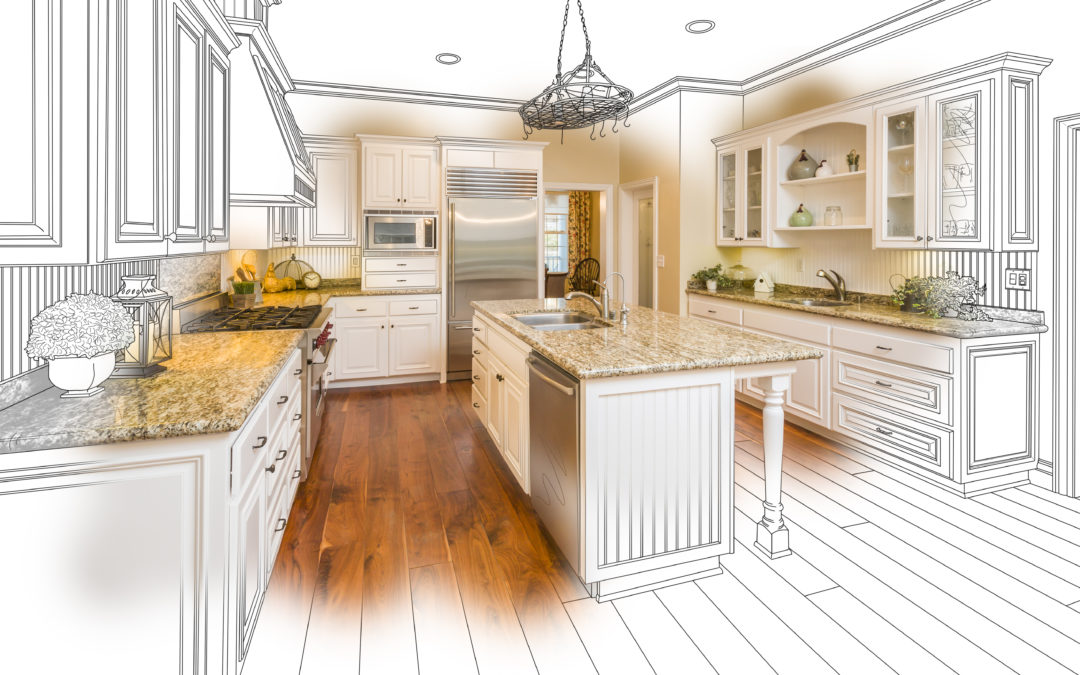Kitchen remodeling is an exciting yet intricate process that requires careful planning, budgeting, and execution. A well-planned kitchen renovation can enhance the aesthetics and functionality of your space while increasing the overall value of your home. Whether you are upgrading appliances, changing layouts, or adding modern design elements, knowing the correct steps to remodel a kitchen can make the journey smooth and stress-free. Here is a step-by-step guide to help you navigate the kitchen remodeling process from start to finish.
Step 1: Assess Your Needs and Set Goals
Before diving into the remodeling process, evaluate your current kitchen setup and identify what aspects need improvement. Ask yourself questions like:
-
What do I like and dislike about my current kitchen?
-
Do I need more storage space?
-
Should I change the layout for better efficiency?
-
What is my design preference?
Setting clear goals ensures that the renovation aligns with your lifestyle, cooking habits, and aesthetic preferences. It also helps in determining the essential upgrades required to make your kitchen more functional and visually appealing.
Step 2: Establish a Budget
Budgeting is a crucial step in any kitchen remodeling project. Consider all expenses, including materials, labor, appliances, and unexpected costs. It is recommended to allocate around 10-20% of your total budget as a contingency fund to cover any surprises that may arise during the renovation. Research different kitchen remodeling services to compare pricing and find the best options that fit your financial plan.
Step 3: Design and Plan Your Layout
A well-thought-out kitchen layout improves workflow and maximizes space utilization. There are several popular kitchen layouts to choose from, including:
-
Galley Kitchen: Ideal for smaller spaces with a streamlined, efficient design.
-
L-Shaped Kitchen: Offers ample counter space and allows for an open-concept design.
-
U-Shaped Kitchen: Provides plenty of storage and counter space for multiple users.
-
Island Kitchen: A great option for open floor plans, adding extra prep space and seating.
Consulting with a professional kitchen designer or architect can help you refine your design choices and create a blueprint that aligns with your goals and budget.
Step 4: Obtain Necessary Permits
Depending on the scope of your kitchen renovation, you may need permits for electrical, plumbing, and structural work. Local building codes and regulations vary by location, so check with your city or municipality to ensure compliance. Failing to secure the necessary permits can lead to costly fines and delays.
Step 5: Choose Materials and Finishes
Selecting high-quality materials and finishes can significantly impact the durability and aesthetic appeal of your kitchen. Here are some essential components to consider:
-
Cabinetry: Choose between stock, semi-custom, or custom cabinets based on your budget and style preference.
-
Countertops: Popular choices include granite, quartz, marble, and butcher block.
-
Flooring: Opt for materials like hardwood, tile, or vinyl for durability and easy maintenance.
-
Backsplash: Adds a decorative touch while protecting walls from spills and splashes.
-
Lighting Fixtures: Consider under-cabinet lighting, pendant lights, and recessed lighting to enhance visibility and ambiance.
Step 6: Demolition and Preparation
Before construction begins, the existing kitchen must be stripped down. This involves:
-
Removing old cabinets, countertops, and flooring.
-
Disconnecting appliances and utilities.
-
Clearing out debris to prepare for the new installation.
If you plan to stay in your home during the renovation, set up a temporary kitchen space with essential appliances like a microwave, coffee maker, and mini-fridge.
Step 7: Structural and Utility Work
Once the kitchen is cleared out, the next step involves making necessary structural changes and updating utilities. This includes:
-
Moving or adding walls, if needed.
-
Updating electrical wiring and outlets.
-
Installing new plumbing lines for sinks, dishwashers, and refrigerators.
-
Upgrading ventilation and HVAC systems if required.
Hiring licensed professionals for electrical and plumbing work ensures safety and compliance with building codes.
Step 8: Install Cabinets and Countertops
After the infrastructure is in place, cabinetry installation begins. Properly aligned and secured cabinets provide the foundation for countertops. Once cabinets are installed, the countertops are measured, cut, and placed. Some countertop materials, like granite and quartz, may require professional installation to ensure precision.
Step 9: Flooring Installation
Flooring should be installed after the cabinets to prevent damage. Depending on the material chosen, the installation process can take a few hours to a few days. Ensure the flooring is level and properly sealed to enhance durability and longevity.
Step 10: Install Appliances and Fixtures
At this stage, new appliances, plumbing fixtures, and lighting are installed. This includes:
-
Stoves, ovens, and range hoods.
-
Refrigerators and dishwashers.
-
Sinks and faucets.
-
Pendant lights and under-cabinet lighting.
Testing all appliances and fixtures ensures they function correctly before moving on to the final touches.
Step 11: Finishing Touches and Final Inspection
Once all major installations are complete, add the finishing details that bring the kitchen to life. These include:
-
Painting walls and trims.
-
Installing cabinet handles and hardware.
-
Adding decorative elements like rugs, curtains, and plants.
Conduct a thorough inspection to check for any issues or unfinished work. If permits were obtained, schedule a final inspection with local authorities to ensure everything meets safety standards.
Step 12: Clean Up and Enjoy Your New Kitchen
After the renovation is complete, deep clean the kitchen to remove dust and construction debris. Organize your new space by arranging utensils, cookware, and pantry items efficiently. Finally, enjoy your newly remodeled kitchen, designed to enhance both functionality and aesthetics!
Conclusion
A successful kitchen renovation requires careful planning, budgeting, and execution. By following these steps, you can efficiently remodel a kitchen that meets your needs and enhances your home’s value. Whether you choose a minor upgrade or a complete transformation, each phase of the remodeling process plays a crucial role in achieving a stylish and functional kitchen. Investing in high-quality materials, professional installation, and thoughtful design will ensure a kitchen that you and your family will enjoy for years to come.

